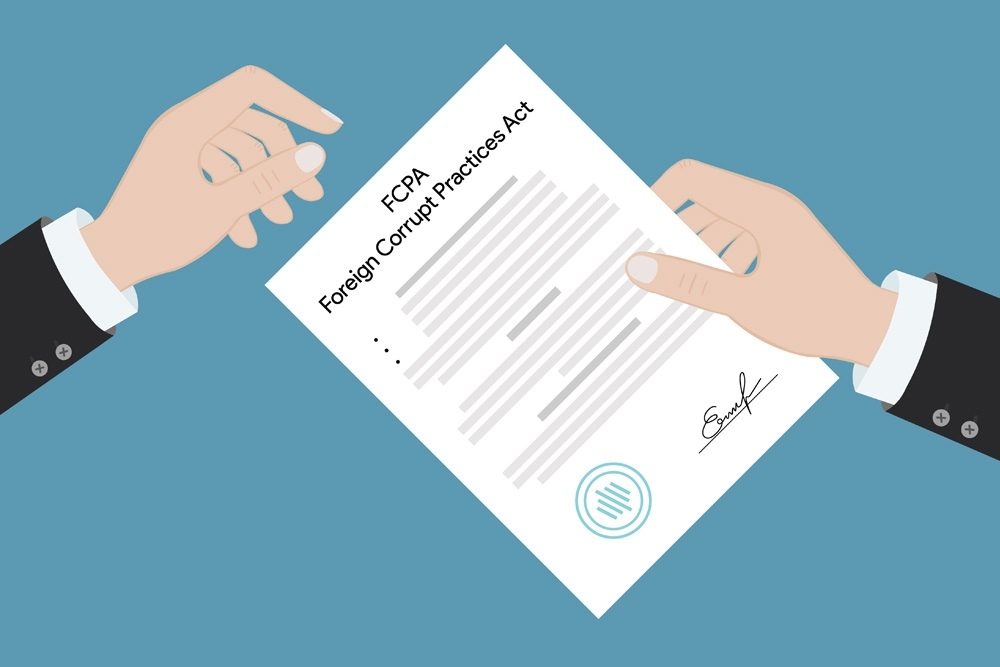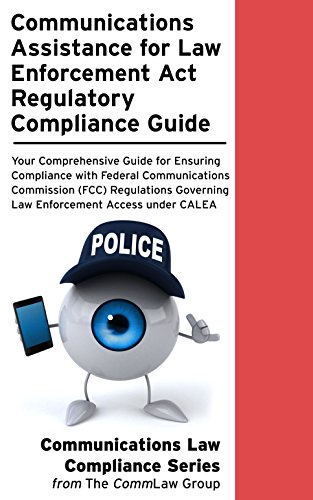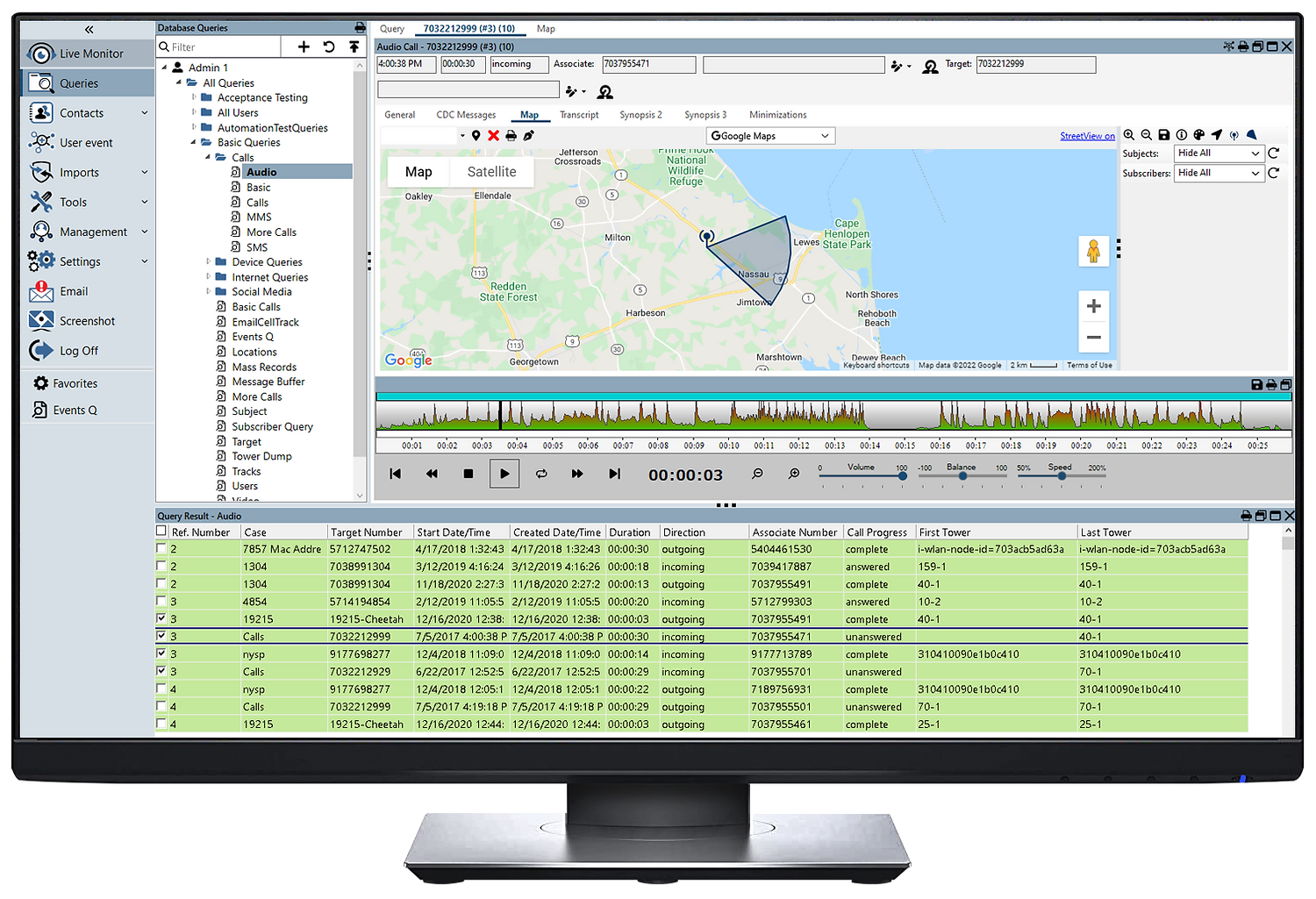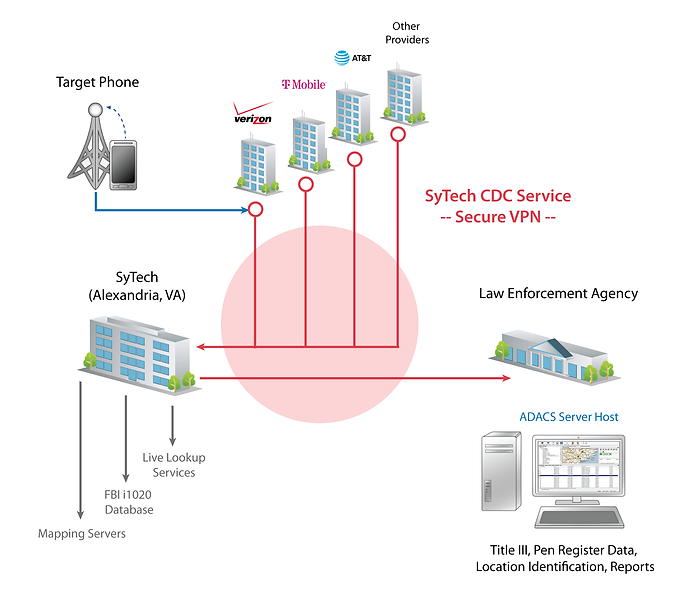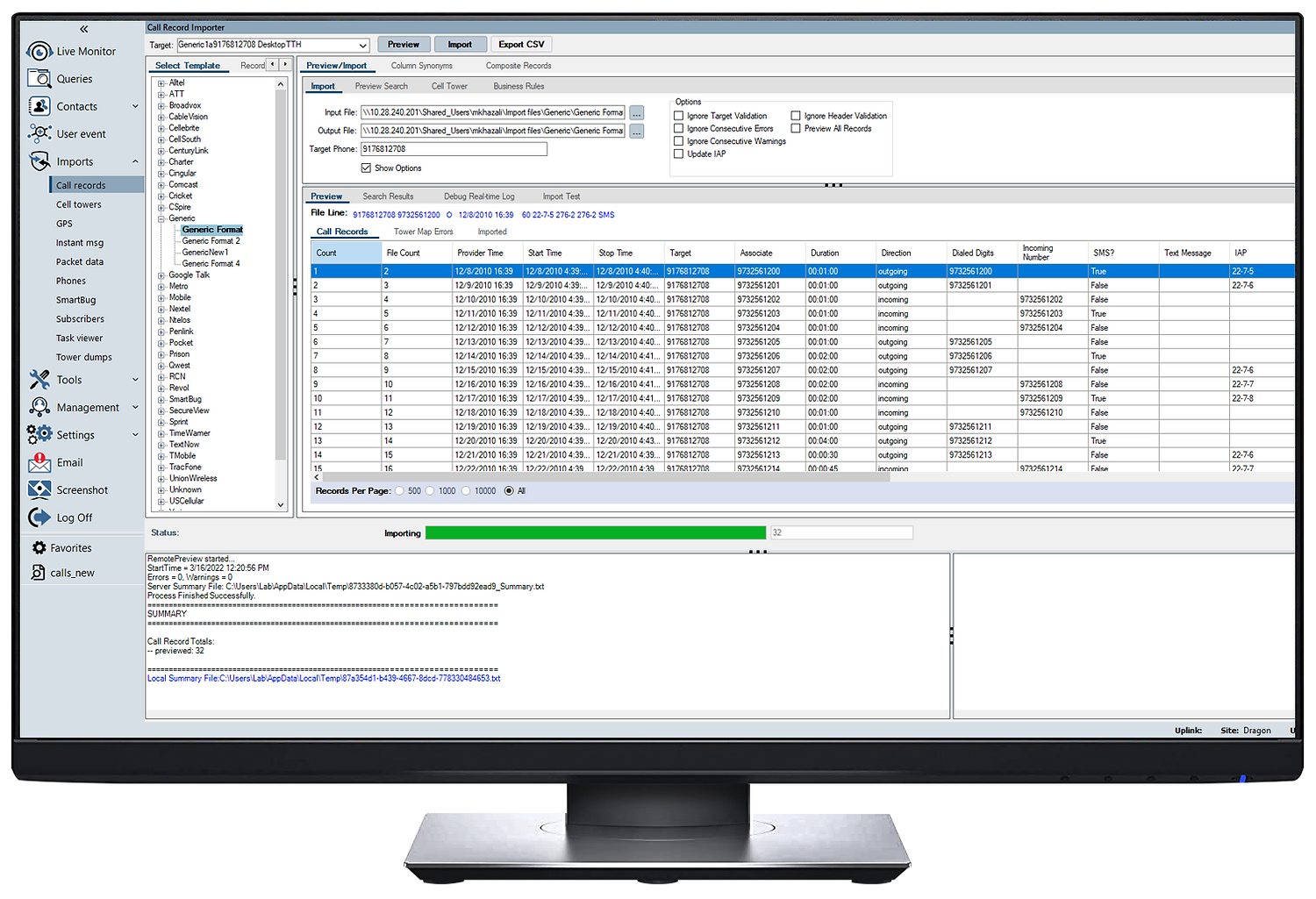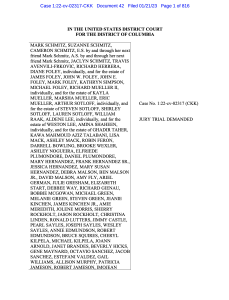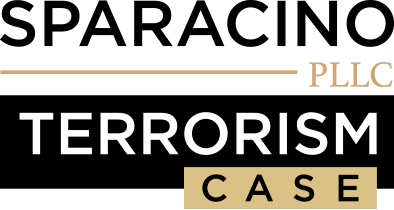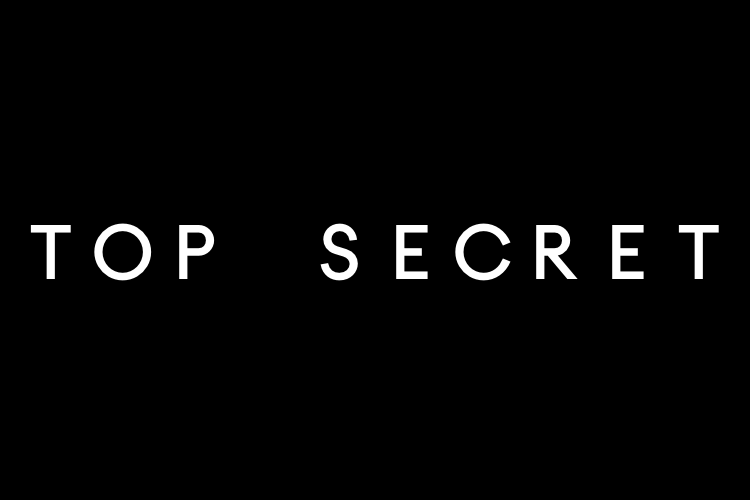
They Know Everything We Do
Telecom and Internet Surveillance in Ethiopia
Human Rights Challenges for Telecommunications Vendors
Addressing the Possible Misuse of Telecommunications Systems
The report addresses the dual impact of communication: promoting global rights and trade while aiding governmental rights violations, with a focus on ICT challenges, especially privacy. Growing state surveillance lacks oversight, demanding global community attention. Telecom regulations exist, but firms like Ericsson set a human-rights model. Striking a balance between security and rights is crucial.
Top 10 biggest FCPA settlements ever
Bribery runs deep in the corporate culture. Many a times companies bribe foreign government officials to win contracts and other favors. To prevent companies and individuals from paying bribes to foreign officials, the United States passed a law called the Foreign Corrupt Practices Act (FCPA) in 1977. The Securities and Exchange Commission (SEC) and the Department of Justice are responsible for enforcing the FCPA. Here we take a look at the top 10 biggest FCPA settlements since the law came into effect in 1977.
Who controls the flow of information?
Ownership of Backup/Emergency Networks in the U.S.
Cradlepoint: Cradlepoint is a private company that specializes in providing cloud-delivered 4G and 5G wireless network solutions. They offer networking solutions that can be used as backup/emergency networks for various organizations, including public safety agencies.
Ericsson accelerates 5G for Enterprise with acquisition of CradlepointFirstNet: FirstNet is an independent authority within the U.S. Department of Commerce's National Telecommunications and Information Administration (NTIA). It was created to build and operate a dedicated wireless broadband network exclusively for first responders, including police, fire, and emergency medical services. AT&T was awarded the contract to build and maintain the FirstNet network in a public-private partnership.
Some of the major players in the 5G intellectual property space include:
- Qualcomm: A leading technology company known for its contributions to wireless communication technologies and widely recognized for its 5G innovations.
- Huawei: A Chinese multinational technology company that has heavily invested in 5G research and development and holds a significant number of 5G patents.
- Ericsson: A Swedish multinational networking and telecommunications company with a substantial portfolio of 5G-related patents.
- Nokia: A Finnish multinational corporation that is actively involved in the development of 5G technology and holds a considerable number of relevant patents.
- Samsung: A South Korean multinational conglomerate with a strong presence in the telecommunications industry and an extensive 5G patent portfolio.
- ZTE: Another Chinese multinational telecommunications equipment and systems company with significant 5G intellectual property holdings.
It's important to note that the distribution of 5G intellectual property might have evolved since my last update, and new companies or entities may have emerged as key players in this domain. Additionally, various licensing agreements and collaborations between companies contribute to the wider adoption and use of 5G technologies across the industry. For the most current and accurate information about the ownership of 5G intellectual property, it's advisable to refer to up-to-date sources and industry reports.
A significant portion of the hardware that encompasses the Radio Access Network (RAN) in the United States is manufactured by several major companies. Some of the prominent players in this industry include:
- Ericsson: A Swedish multinational networking and telecommunications company known for providing RAN equipment and solutions.
- Nokia: A Finnish multinational corporation that offers a range of telecommunications equipment, including RAN solutions.
- Huawei: A Chinese multinational technology company that has been a significant player in the global telecommunications market, providing RAN infrastructure and solutions.
- Samsung: A South Korean multinational conglomerate that manufactures RAN equipment and has been expanding its presence in the telecommunications industry.
- ZTE: A Chinese multinational telecommunications equipment and systems company that offers RAN solutions.
- Cisco: An American technology company that provides networking and telecommunications equipment, including products for RAN deployment and management.
It's important to note that the telecommunications industry is dynamic, and the market share of companies may change over time due to various factors such as mergers, acquisitions, and evolving technologies. Additionally, regulatory decisions and geopolitical factors can also impact the presence of specific vendors in the United States and other markets. For the most current information, it's recommended to refer to up-to-date sources or industry reports.
Cell phone towers in the United States are owned by a variety of entities, including:
- Major wireless carriers: Companies like AT&T, Verizon, T-Mobile (which includes Sprint after their merger), and US Cellular own a significant number of cell phone towers to support their wireless networks.
- Tower companies: There are specialized companies that own and operate cell towers as their primary business. These tower companies lease tower space to multiple wireless carriers, allowing carriers to expand their coverage without the need to build their own towers. Examples of tower companies include American Tower Corporation, Crown Castle, and SBA Communications.
- Local and regional carriers: Smaller regional wireless carriers also own and operate cell phone towers in their respective service areas.
- Government agencies: Some cell towers are owned by government agencies and public institutions for various purposes, including emergency communications and public safety.
The ownership of cell phone towers is a diverse landscape, with a mix of private companies, tower operators, and government entities contributing to the extensive cellular infrastructure across the country.
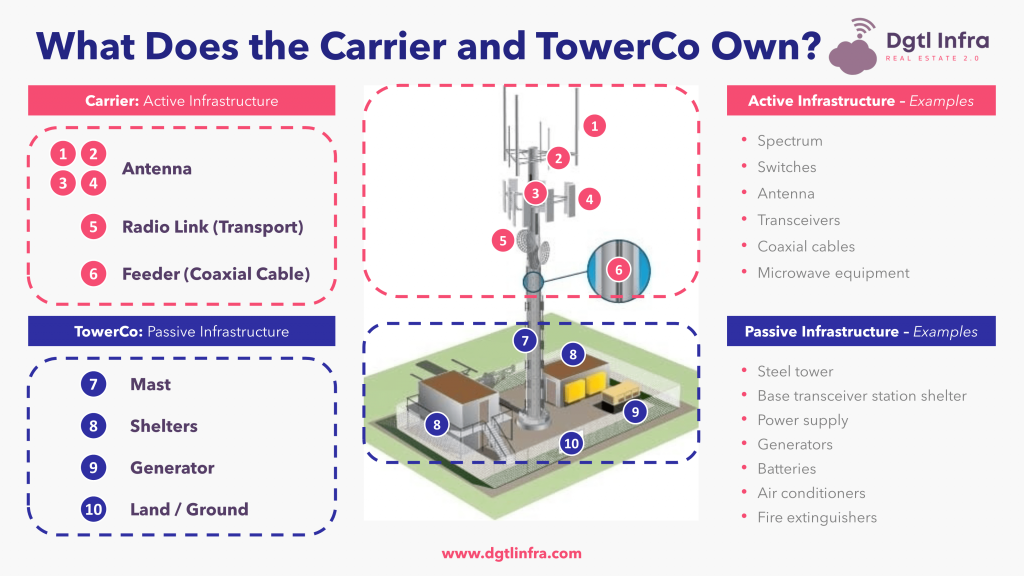
The internet backbone in the United States is not owned by a single entity, but rather it is a complex network of interconnected high-capacity fiber-optic cables and network infrastructure owned and operated by multiple private companies and telecommunication providers.
Some of the major companies that own and operate significant portions of the internet backbone in the United States include:
- AT&T
- Verizon
- CenturyLink (now known as Lumen Technologies)
- Comcast
- Level 3 Communications (now part of CenturyLink)
- Sprint (now part of T-Mobile)
These companies, along with several others, invest in and maintain the infrastructure that forms the backbone of the internet in the U.S. They provide the essential connectivity that enables data to flow between different networks and regions, facilitating the functioning of the internet as we know it. Additionally, many of these companies also have international connections, which further contribute to the global nature of the internet.
It's important to note that the internet backbone is a dynamic and ever-changing network, with new players and technologies continuously emerging and evolving to meet the growing demands of internet users and data traffic.

Satellites in orbit are owned and operated by a wide range of organizations, including governments, private companies, research institutions, and international organizations. Here are some of the main categories of satellite owners:
- Government Agencies: Many countries have their own space agencies that own and operate satellites for various purposes, such as communication, Earth observation, scientific research, and national defense. For example, NASA in the United States and ESA (European Space Agency) in Europe own and operate numerous satellites.
- Commercial Satellite Operators: Private companies own and operate a significant number of satellites for purposes like telecommunications, broadcasting, Internet access, and navigation. Examples include companies like SpaceX, Boeing, SES, and Iridium.
- International Organizations: Some satellite systems are operated by international organizations. The most notable example is the United Nations' International Telecommunication Union (ITU), which manages the allocation of orbital slots and radio frequencies for satellite communication.
- Research and Educational Institutions: Universities and research institutions may have their own satellites for scientific experiments and educational purposes.
- Military and Defense Organizations: Many countries operate military satellites for purposes like surveillance, reconnaissance, and secure communications. These are typically owned and operated by their respective defense departments.
- Commercial Satellite Constellations: Some companies are deploying large constellations of small satellites for purposes like global broadband Internet coverage. For example, SpaceX's Starlink and OneWeb are two such constellations.
The ownership and operation of satellites are diverse and distributed worldwide. The specific details of ownership and the number of satellites owned by each entity can change over time as new satellites are launched and old ones are retired. It's important to note that the information about satellite ownership is not static and may vary depending on the source and the time frame of reference.
What is CALEA?
The U.S. Congress passed the Communications Assistance for Law Enforcement Act (CALEA) in 1994 to aid law enforcement in its effort to conduct surveillance of digital telephone networks.
CALEA forced telephone companies to redesign their network architectures to make such surveillance easier. It expressly excluded the regulation of data traveling over the Internet.
Lawful Intercept and Title III Collection
ADACS4 interfaces to all major services providers including Verizon, AT&T, T-Mobile and more. Upon receiving a probable cause order*, law enforcement agencies are able to receive real-time voice and pen register data from the targets and associates. SyTech reduces the cost and complexity of the lawful intercept by leveraging existing connections with service providers, supplying real-time voice and data to the law enforcement agency. Learn More
* Please note that SyTech is one of many companies offering CALEA compliance services. This mention is not an accusation, but rather a reference to illustrate the capabilities of third-party providers and highlight how such technologies could potentially be misused.
Live Collection & Pen Register
Social Media & Web Traffic Analysis
Call Detail Records
GPS & Location Tracking
The story of WikiLeaks founder Julian Assange, following the controversial figure from 2011 to the 2016 U.S. presidential election and its aftermath.
The inside story of how a telecom giant dealt with terrorists and financed shady deals in pursuit of profits around the globe.
ICIJ
Leak
17 year pattern of corruption spanning 5 countries.
DPA Violations
Deferred Prosecution Agreement violations.
FCPA Violations
$1B fine for Foreign Corrupt Practices Act violations.
Class Action
Shareholder class action lawsuit for misleading investors.
Foreign Bribery
$207M fine for foreign bribery settlement.
SCHMITZ et al v. ERICSSON INC. et al
862 Americans comprised of 286 Gold Star Families of slain and injured sue Ericsson over claims it funded Middle East terror. A new lawsuit alleges the company routed funds through partners to terrorists while Americans were risking their lives in Iraq, Afghanistan and Syria. Follow the lawsuit for more details.
SWEDISH TELECOMMUNICATIONS GIANT LM ERICSSON AND ITS U.S. DIVISION ERICSSON INC. SUED BY 862 AMERICANS FOR ALLEGED PROTECTION MONEY PAYMENTS TO AL-QAEDA, AL-QAEDA-IN-IRAQ, AND ISLAMIC STATE
We currently represent more than 4,000 Americans, including more than 1,000 Gold Star families, whose loved ones were killed or seriously injured in terrorist attacks in Iraq or Afghanistan.
Historical Timeline
2011 - June 14Ericsson aquires Telcordia
Ericsson acquired American telecommunication research and development company Telcordia for £1.15 billion. Ericsson Press Release2013 - February 19Ericsson rebrands Telcordia to iconectiv
Ericsson announced its interconnection business, known previously as Telcordia Interconnection Solutions, had been renamed to iconectiv – an Ericsson brand TMC Net2013 - March 3rdEricsson's Iran role under scrutiny
A US lawmaker is raising concerns about Ericsson’s dealings in Iran, claiming that the Swedish telecommunications equipment maker was helping the Iranian state commit human rights abuses with the help of its technology. Financial Times2013 - March 3rdEricsson's Telcordia beats Neustar for key number portability contract
FCC awards key government number portability contract to the Ericsson subsidiary Telcordia in a huge blow to Neustar despite security concerns by some in the intelligence community. Fierce Wireless2019 - December 6thViolation of Foreign Corrupt Practices Act
Ericsson pays $1 Billion dollar fine for violation of FCPA. Dept. of Justice2022 - February 27thICIJ publishes the Ericsson List
Internal investigation from Ericsson leaked to ICIJ. ICIJ2022 - March 4thShareholder class action lawsuit
Ericsson sued by investors. Fierce Wireless2022 - June 9thDOJ & SEC reopen investigation
Dept. of Justice and Securities Exchange Commission reopen cases. Reuters2022 - August 5thSCHMITZ et al v. ERICSSON INC. et al
Gold star families and service members sue in civil court.Pacer Monitor2023 - March 2ndEricsson pays $206 Million
Ericsson pays $206.7 million in a foreign bribery settlement.Wall Street Journal
History of Bellcore / Telcordia
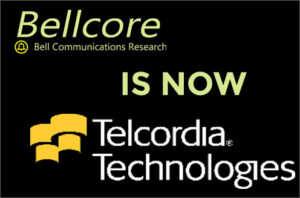
Sweden - The Compass - Ericsson
In this episode, the Kompassen takes a look at Ericsson's activities, both contemporary and historical.


